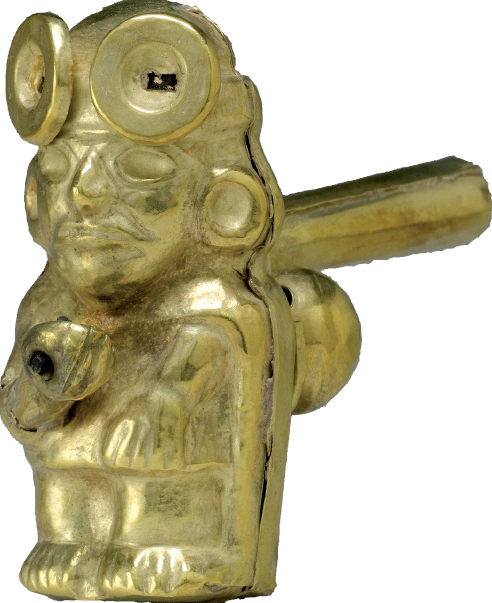The Aztecs, the Maya, and the Incas

Three significant civilizations had developed by the early sixteenth century: Aztec and Mayan societies in the equatorial region and the Inca society along the Pacific coast in present-day Peru. Technologically advanced and with knowledge of mathematics and astronomy, these societies were characterized by vast mineral wealth, large urban centers, highly ritualized religions, and complex political systems. Unlike their counterparts in Europe, Asia, and Africa, they did not develop the wheel to aid in transportation, nor did they have steel tools and weapons. Since most of their commerce was carried out over land or along rivers and coastlines, they did not build large boats. They also lacked horses, which had disappeared from the region thousands of years earlier. Still, the Aztecs, Maya, and Incas established grand cities and civilizations that rivaled those of the most sophisticated societies in the world.
Around 1325 C.E., the Aztecs, who called themselves Mexica, built their capital, Tenochtitlán, on the site of present-day Mexico City. As seminomadic warriors who had invaded and then settled in the region, the Aztecs drew on local residents’ knowledge of irrigation and cultivation and adopted their written language. Aztec commoners, who tilled communally owned lands, were ruled over by priests and nobles. The nobles formed a warrior class and owned vast estates on which they employed both serfs and slaves captured from non-Aztec communities in the region. Priests promised fertility—for the land and its people—but demanded human sacrifices, including thousands of men and women from captured tribes. To sustain their society, Aztecs extended their trade networks into surrounding areas. Aztec artisans produced valuable trade goods like pottery, cloth, and leather goods that were exchanged for textiles, food items, and obsidian (the volcanic rock used to make sharp-edged tools) as well as bird feathers, tortoiseshells, and other luxury goods. As Malintzin’s story illustrates, Aztecs also traded in slaves.
When Malintzin was sold to a Chontal Mayan village by Aztec merchants, she was being traded from one grand civilization to another. The Maya had slowly settled the Yucatán peninsula and the rain forests of present-day Guatemala between roughly 900 B.C.E. and 300 C.E. They established large cities that were home to skilled artisans and developed elaborate systems for irrigation and water storage. Farmers worked the fields and labored to build huge stone temples and palaces for rulers who claimed to be descended from the gods. Learned men developed mathematical calculations, hieroglyphic writing, and a calendar. Mayan astronomers also developed an amazingly accurate system for predicting eclipses of the sun and the moon.
Yet the Mayan civilization began to decline around 800 C.E. An economic crisis, likely the result of a drought and exacerbated by heavy taxation, probably drove peasant families into the interior. Many towns and religious sites were abandoned. Yet some communities survived the crisis and reemerged as thriving city-states. By the early sixteenth century, they traded with the Aztecs.
The Incas developed an equally impressive civilization in the Andes Mountains along the Pacific coast. The Inca empire, like the Aztec empire, was built on the accomplishments of earlier societies. At the height of their power, in the fifteenth century, the Incas controlled some sixteen million people spread over 350,000 square miles. They constructed an expansive system of roads and garrisons to ensure the flow of food, trade goods, and soldiers from their capital at Cuzco through the surrounding mountains and valleys. Pack trains of llamas hauled tribute from conquered tribes to provincial centers and then on to Cuzco.
The key to Inca success was the cultivation of fertile mountain valleys. Cuzco, some eleven thousand feet above sea level, lay in the center of the Inca empire, with the Huaylas and Titicaca valleys on either side. Here residents cut timber from dense forests and cultivated potatoes and other crops on terraces watered by an elaborate irrigation system. Some artisans crafted gold and silver from the rich mountains into jewelry and decorative items, while others excelled at stone carving, pottery, and weaving. Thousands of laborers constructed elaborate palaces and temples. And like the Aztecs, Inca priests sacrificed humans to the gods to stave off natural disasters and military defeat.